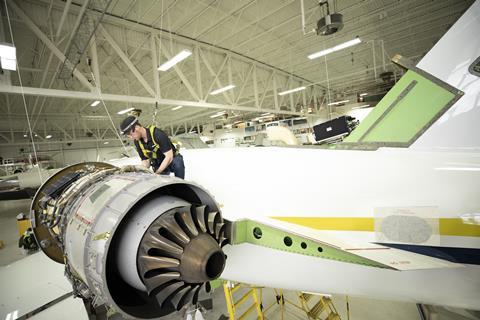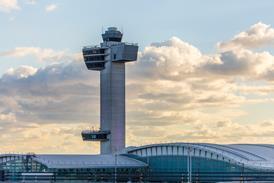Bombardier has undergone a remarkable transformation in the past six years when it comes to looking after its customers throughout the ownership of their aircraft. It’s a journey that has seen the manufacturer introduce digital initiatives such as onboard predictive maintenance software, an enhanced per-flight-hour parts and maintenance program, and a succession of new or expanded company-branded service facilities around the world.

This investment in its aftermarket offering mirrors Bombardier’s single-minded focus on business aviation after the company’s transition to a pure-play business jet manufacturer began around the same time. Now it’s keen to tell the story. “We’ve done an amazing job, but our next task is to bring everything together and really communicate that superior in-service experience,” explains Bombardier’s Vice-President Customer Support, Anthony Cox.
The process began around 2018 with a decision to direct considerable company resources toward customer care, with digital innovation and bricks and mortar expansion at its core. New branded service operations were opened in or announced for Miami Opa Locka, Melbourne Australia and Abu Dhabi, while existing centres in London Biggin Hill and Singapore were extended or replaced with much larger hangars.
On the digital side, there was the launch of an app that allows owners to track their aircraft through a maintenance visit, as well as Smart Link Plus, a cloud-based aircraft health management program designed to provide operators with data-driven insights into how their aircraft is performing in near-real time. Introduced on the Global 7500 aircraft, it is now included as standard on new-build types, or as a retrofit on most Global and Challenger aircraft.
While Smart Link Plus makes it possible for customers to detect any technical issues before they become problems, thus cutting potential maintenance bills, Bombardier’s new Smart Services Elite cost-per-flight-hour program enables them to absorb almost every maintenance cost with one easy payment, based on hours flown. It is the ultimate peace-of-mind feature, removing any uncertainty about one-off bills in the future for everything from parts and labour to an aircraft on ground (AOG) event.
For business jet operators, however, an equally valuable commodity is time, and that’s why the aftermarket proposition has an additional layer of assurance. If their jet has a problem a long way from home, owners need it dealt with swiftly and efficiently. The recently expanded Mobile Response Team (MRT) now has 35 vehicles based across North America, Europe and the Middle East helping AOG affected operators get back to the skies as quickly and hassle-free as possible.
Underpinning the whole approach is a philosophy that puts the Learjet, Challenger and Global aircraft owners front and centre. “Our customers want to do business with us in a very simple manner, and everything we do is about making that engagement easier,” says Cox. “We have empowered our staff to be true ambassadors of the brand, and make our customers feel at home and cared for whether they are in Melbourne, Hartford or Berlin.”
Cox acknowledges that the shift to an even more customer-centric culture could not happen overnight. “We have done a lot of training and engaging with our front-line teams. I did two laps of the world in 2023, for example, and met with every employee,” he says. “Ensuring our teams embrace our culture and brand values, and really making sure the customer feels we are their partners and advocates, goes further than simply doing technical training. It’s not something you can just get across with PowerPoint slides.”
Cox maintains that the effort is paying off when it comes to the feedback Bombardier receives from net promoter score (NPS) polls that ask how likely service users are likely to recommend to others, as well as third-party surveys of customer satisfaction and engagement. “All these metrics are trending positive, but when we also look at anecdotal evidence, customers are also recognizing the transformation and invigorated culture within the organization,” he says.
“It all started with us saying that we know our aircraft best as the OEM, followed by a decision to really back that up with investment in technology and infrastructure,” says Cox. “Customers now realize that what we have built is an entire ecosystem. It’s all about giving the customer comfort and reassurance that the factory service they received when the aircraft was delivered is going to remain consistent throughout their ownership, wherever they are in the world.”























